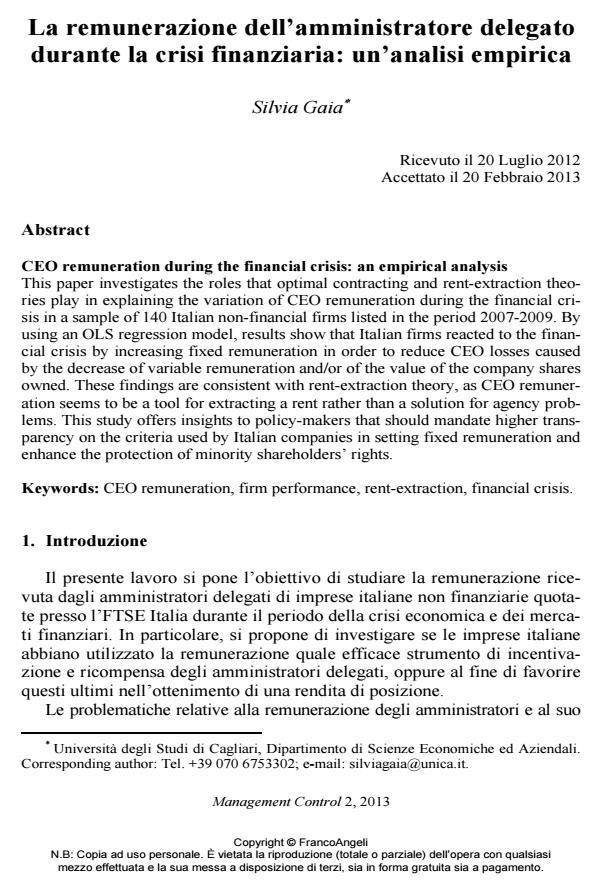La remunerazione dell’amministratore delegato durante la crisi finanziaria: un’analisi empirica
Titolo Rivista MANAGEMENT CONTROL
Autori/Curatori Silvia Gaia
Anno di pubblicazione 2013 Fascicolo 2013/2
Lingua Italiano Numero pagine 18 P. 111-128 Dimensione file 711 KB
DOI 10.3280/MACO2013-002006
Il DOI è il codice a barre della proprietà intellettuale: per saperne di più
clicca qui
Qui sotto puoi vedere in anteprima la prima pagina di questo articolo.
Se questo articolo ti interessa, lo puoi acquistare (e scaricare in formato pdf) seguendo le facili indicazioni per acquistare il download credit. Acquista Download Credits per scaricare questo Articolo in formato PDF

FrancoAngeli è membro della Publishers International Linking Association, Inc (PILA)associazione indipendente e non profit per facilitare (attraverso i servizi tecnologici implementati da CrossRef.org) l’accesso degli studiosi ai contenuti digitali nelle pubblicazioni professionali e scientifiche
This paper investigates the roles that optimal contracting and rent-extraction theories play in explaining the variation of CEO remuneration during the financial crisis in a sample of 140 Italian non-financial firms listed in the period 2007-2009. By using an OLS regression model, results show that Italian firms reacted to the financial crisis by increasing fixed remuneration in order to reduce CEO losses caused by the decrease of variable remuneration and/or of the value of the company shares owned. These findings are consistent with rent-extraction theory, as CEO remuneration seems to be a tool for extracting a rent rather than a solution for agency problems. This study offers insights to policy-makers that should mandate higher transparency on the criteria used by Italian companies in setting fixed remuneration and enhance the protection of minority shareholders’ rights.
Parole chiave:CEO remuneration, firm performance, rent-extraction, financial crisis.
Silvia Gaia, La remunerazione dell’amministratore delegato durante la crisi finanziaria: un’analisi empirica in "MANAGEMENT CONTROL" 2/2013, pp 111-128, DOI: 10.3280/MACO2013-002006